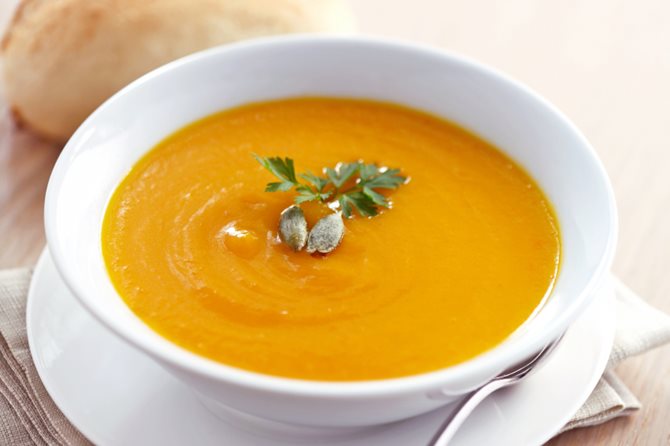Salt Levels in Ready-to-Eat Soup Purchased in Catering Establishments

- Project start date: 1 April 2010
- Project status: Completed
- Project type: Nutrition
- Discipline: Food reviews
- Author/s: Dr Fidelma Kirwan, Eolas International Research Ltd., Co. Cork
- Collaborator/s: BODYCOTE CONSULTUS, Co Cork
Research objective
The survey set out to investigate any differences in the salt content of soups that claim to be ‘homemade/ freshly prepared’ versus other types of soups sold in catering outlets. The results will be used to communicate salt reduction messages to consumers and the food industry.
Outputs
Research report
- Title: Survey of salt levels in soup in catering establishments on the island of Ireland
- Publication date: 5 March 2011
- Summary: The aim of this survey was to provide a snap shot of the salt content of soup from a range of catering outlets on the island.
- Findings:
- There was a large range in the salt content per serving (0.5-5.5g salt/serving) and per 100g (0.76-1.76 g salt/100g).
- Serving sizes of soups sampled in this survey varied, ranging from 155-690g.
- The average portion of soup (303g) contained 60 per cent of the RDA salt intake.
- One in ten samples contained more than the RDA for salt in a single serving.
- 95 per cent of ready-to-eat soups from catering outlets contained more than 30 per cent of the four grams RDA for salt.
- 74 per cent of ready to eat soups from catering outlets contained more than 30 per cent of the maximum recommended intake of six grams salt per day.
- There was no difference in salt levels between soup marketed as ‘homemade’ and ‘other’.
- The food industry has made significant reductions in the salt content of soups and this survey confirms that they have met their agreed commitments.
Recommendations
Food industry
- As most salt is added at the manufacturing stage, continued engagement with the food industry is required to further reduce the level of salt in processed foods including soup.
- Further work should be undertaken with caterers to raise awareness of the salt content of processed foods, such as soup, and also to encourage them to modify their recipes/ nutritional profile of the products they offer for sale, be it made on-site by themselves or bought in from a third party.
- Catering establishments should give their customers the choice when it comes to added salt in soups by reducing the amount of salt they add during the cooking stage and let the customer add more at the table if they want to.
- Many caterers where possible should reduce portion sizes.
Consumers
- A lot of food in the catering sector has already been salted, e.g. just one serving of soup may give them as much as 60 per cent of their four grams per day allowance of salt (50 per cent of the six grams per day upper limit)
- Having one or two slices of bread with their soup will further contribute to their daily salt intake and in some cases their daily requirement for salt may be achieved in one sitting
- Asking for lower salt options will make caterers aware that there is a demand for lower salt options and may drive a change towards lower salt option on the menu
- Soups marketed as ‘homemade’ are not necessarily low in salt
- They should taste their food prior to adding salt
- Where possible they should reduce the portion size.
Similar research
- Nutrition Take Out series – wrap style sandwiches and Indian takeaway foods (2013)
- Nutrition Take Out series – pizza, burgers and Chinese takeaways (2010)
- Survey of artificial colours in selected ethnic foods in takeaways (2012)
- An investigation into the usage of Monosodium Glutamate in the ethnic food catering industry (2010)




